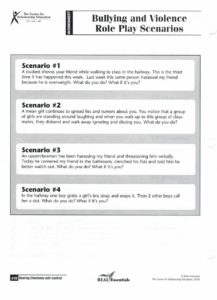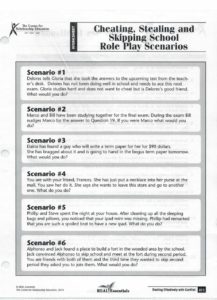Sexual Risk Avoidance vs. Sexual Risk Reduction
23 Sep, 2019

Educators and school administrators have debated for years about what methods work best to teach youth about human sexuality. As we determine how to best educate our children and teens on these issues, we must first evaluate what educators are presenting as options.
Currently, there are two primary angles that health teachers are taking with their students: Sexual Risk Avoidance (SRA) and Sexual Risk Reduction (SRR). Though they sound very similar (with only one word differentiating the two), their core ideals differ greatly from one another.
Sexual Risk Avoidance
Proponents of SRA seeks to educate youth on whole person health– healthy relationship choices, thoughtful decision-making skills and an understanding of leadership and integrity. By providing a well-rounded perspective on health in addition to education about sexuality, SRA aims to teach youth that they are more than just sexual bodies but thinking minds.
Sexual activity is a normal part of life and one that God Himself encourages and blesses within marriage (Genesis 2), but developing a whole, healthy person with successful relationships goes beyond just sexual activity. In fact, in order for young people to have a healthy understanding of their sexuality, it’s crucial that a deep knowledge of their whole selves– body, mind and soul– be intertwined.
In addition to education on handling romantic relationships, SRA covers healthy friendships and professional relationships. This method also incorporates leadership development tools that are applicable to all of life. SRA is designed to be comprehensive, not simply sexuality-focused. The mission is to “equip and empower youth to make healthy choices that will set the foundation for a successful future” through education and character development.
The Center for Relationship Education documented the effectiveness of SRA on their website. According to the students’ exit surveys, 99% reported the session had a positive effect on their sexual behaviors, 63% said they postponed sex due to the skills they learned from REAL Essentials and 32% said they used protection due to REAL Essentials. In addition, 23% said they reduced their number of sexual partners to one partner.
You can find examples of a SRA curriculum here:



Sexual Risk Reduction
In contrast, SRR focuses mainly on prevention of pregnancy and STDs through “safe sex.” With a protection-only mindset– “have sex, but use a condom”– educators are robbing youth of key facets that express sexual relationships in conjuction with all other aspects of life. With these important missing pieces, students are left viewing themselves through a faulty lens.
Instead of educating students on how to maintain a variety of healthy relationships– in addition to sexual relationships– SRR focuses only on how to avoid the consequences of being sexually active. And instead of teaching young people to reject unhealthy behaviors, SRR encourages sexuality as an “expression” rather than an act of love between individuals in a legally binding, committed relationship with one another (marriage). The numbers of unwed pregnancies have actually risen, even in states that have incorporated SRR, pointing to the ineffectiveness of this method of education.
In addition, a key encourager of SRR is Planned Parenthood, whose sexual health curriculum contains medically inaccurate information that is inappropriate for youth.
What to Do
As we mentioned in our recent blog post, it’s important that parents be aware of what their children are learning in school about sexuality and to be involved in their child’s education.
If you’re looking for resources to educate your child on these topics in a biblical and God-honoring way, we encourage you to contact us for more information.